
Video games are unique as an artistic medium. Not only do they allow the consumer to interact with a much wider possibility space than other mediums, but they also allow the consumer to directly influence the art itself. The stories, experiences, messages, and meaning that are conveyed are not only subject to the interpretation of the consumer, but they can be directly influenced or changed by the consumer. In some cases, a game can even prey upon the expectations of the player, or the player's desire to complete the game, in order to convey a particular message, or to make a statement about the player's actions.
One classic example of a game that plays the player as much as the player plays it is Silent Hill 2. That game's endings, and the triggers for each ending, have always been one of my favorite design aspects of that game. Silent Hill 2 takes advantage of the player's preconceived notions about how a horror game should be played, and it uses your play to pivot James' resolution (and his very character) in one of several directions.
Watch a video version of this blog post on YouTube!
I'm going to be talking about Silent Hill 2's endings. It should go without saying that this post will include major spoilers for Silent Hill 2. I'll also be comparing Silent Hill 2 to other games such as Mass Effect, Fallout, The Witcher III, The Last of Us, and What Remains of Edith Finch. As well as the post-Team Silent games: Silent Hill: Homecoming, Silent Hill: Shattered Memories, and Silent Hill: Downpour. So there will also be varying degrees of spoilers for those other games as well.
Spoilers incoming for the above games. Consider yourself warned! [More]
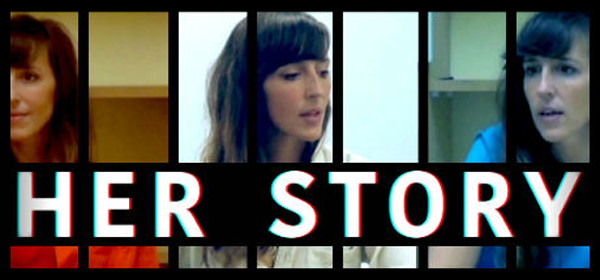
Having a little bit of free time between playing Madden 20 and starting out this year's indie football games, I checked out a couple indie games that I've had sitting around in my Steam library for months. Both are player-driven mystery games about trying to deduce the events of the past. The simpler of the two is called Her Story, which is a game that released all the way back in 2015. So I'm quite a few years late to this party.
Her Story attracted my attention because it was developed by Sam Barlow. Barlow had previously worked as a writer for Silent Hill: Origins and Silent Hill: Shattered Memories. Personally, I felt he and the other writers at Climax had butchered Origins. His work on Shattered Memories, however, which was not bound by the constraints of established Silent Hill canon, went in a more interesting direction. Maybe not as interesting as if they had gone with the initial Cold Heart pitch, but whatever. I was curious to see what Barlow would do when completely free of the Silent Hill namesake.
I was curious how Sam Barlow would handle himself when free of the Silent Hill namesake.
Down the deductive rabbit hole
Her Story stands out because it is a completely player-driven experience. You have almost free access to a database of interview answers from a woman who is a suspect in the disappearance (and murder) of her husband. The game consists of searching through a series of live-action videos of interview questions, in which every word of her answers have been indexed for search. The catch is that you can't simply watch all the clips in order, and the game will only give you (at most) the first five clips at a time (in chronological order). You also don't know what questions are being asked, so you don't necessarily have the context for her responses.
Each response is laden with bread crumbs of keywords that you can pick out and search in subsequent queries in order to find related videos and discover additional details about the suspect's life, the victim's life, and the events leading up to the disappearance of her husband. This is where Her Story really shines. The game starts with the word "murder" in the search bar, and each clip that you watch will reveal new names and places. This should lead you towards going down the rabbit hole of searching for each new name or place until you eventually come to the weirder and more interesting testimony.The scripts is expertly designed to distribute bread crumbs in such a way to dole out the story over the first hour or two in order to build up the mystery.
Pick out key words from her testimony to find related statements.
There's also no hand-holding or guidance of any kind. It's just you and the search engine. It's entirely up to the player to input the words you want to search for. You can follow-up on a particular clip by searching for a keyword in her response, or you can search for some completely different, random word(s) instead. The game doesn't highlight the next words for you to search. It doesn't stop to tell you that you've "solved" some mystery or completed some objective. There's a widget that shows you how much of the database you've viewed, but other than that, there is no in-game progress-tracker. In fact, there's not even a real end goal.
... [More]
4259fc7f-e8ef-49b1-8252-3035b9b687c7|0|.0
Tags:Her Story, Sam Barlow, indie gaming, Steam, search engine, database, interview, police, murder, mystery, Silent Hill
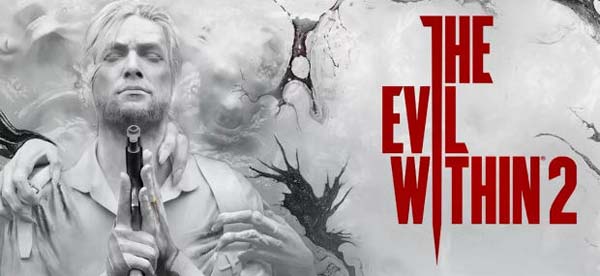
Okay, I said I would give up on Shinji Mikami after the first Evil Within game, but here I am giving that IP a second chance. I had heard that the expansions for Evil Within were actually pretty good, and that they even made the base game better by filling in some of the narrative gaps. But I was so furious with the base game that I sure as hell was not going to shell out more money for DLCs. If they were that integral to the core game, then they should have been included with the core game. Now that my furor over the original has faded a bit, I was hearing that the sequel is also much better than the original game and leans more heavily in the horror camp than the action shooter camp. I was dismissive of the game's announcement, and I was skeptical of the claims that the sequel was actually good, so I picked up a [relatively] cheap used copy off eBay so that I could give it a chance over the Halloween week without necessarily giving any more money to Bethesda.
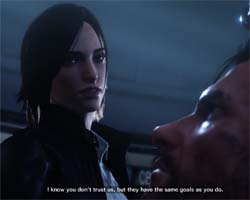
I feel like I missed something...
Maybe I should've played the DLC?
Besides, Shinji Mikami isn't the director this time around. Instead the sequel is directed by John Johanas, who was the director of the [supposedly] good DLC expansion packs. The first game actually did have some good ideas and set pieces within, so maybe a different directorial approach could bring those ideas out to their full potential?
A more focused package
To Johanas' credit, the game, as a whole, definitely has a more "unified" presentation. The first game felt very scattershot with regard to how it wanted the player to play. It's early chapters (which were also the most enjoyable parts of the game) were focused mostly on stealth, with a few pursuit and escape moments thrown in. It was slow, somewhat atmospheric, and built incredible tension. But those mechanics were quickly dropped in favor of shooting gallery set pieces, constant scripted ambushes, set piece boss encounters, and frantic, funhouse-ish trap / puzzle rooms. The sequel, thankfully, is much more focused. I didn't feel like I was wasting my resources by putting points into Sebastian's stealth skills (a skill tree that was completely absent from the previous game), as you can actually continue to use them over the course of the entire game. Sure, there's still scripted ambushes and puzzle rooms, but the focus is much more firmly planted in sneaking around, exploring the environments, and generally avoiding detection.
Unfortunately, there's still a bit too much of a focus on frenzied action. It detracts significantly from any sort of horror or tension that the game might be trying to build up. The autosaves are fairly generous (even though there are also manual save points in each of the game's safe houses), so enemies come in hordes, hit very hard, and deaths are going to happen. Chapter 3 basically completely desensitized me to death and put me in the habit of just standing up and letting the monsters kill me if I ever screwed up the stealth.
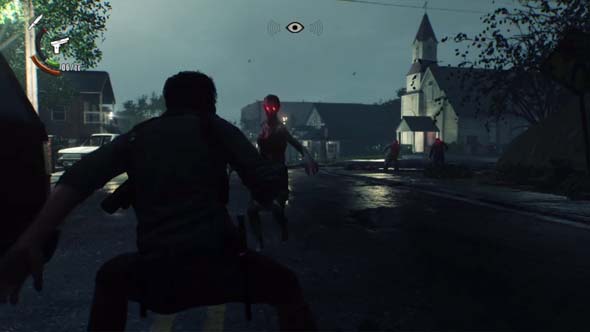
The early combat encounters are not gentle, as they put you up against hordes of enemies.
There's a greater focus on open-ended exploration this time around, and Chapter 3 is the first open map that the player is free to explore. There's basically two main paths through it: the hard one and the easy one. The easy path is basically a straight line due north from where you start, but the game throws some curveball objectives at you that basically encourage you to try the other paths that end up being much harder. You're told about weapon caches and NPCs that you're supposed to try to save. One such weapon is the crossbow, which is actually a pretty necessary tool (because, you know, every game has to have a crossbow). It's right off to the side of where you start, but picking it up can easily lead you down a much harder path to your actual mission objective... [More]
a80e28ec-25a4-48ed-8bdc-50264cab70ac|1|4.0
Tags:The Evil Within, The Evil Within 2, Bethesda, Tango Gameworks, survival horror, horror, action, shooter, open world, sandbox, stealth, zombies, mental institution, virtual reality, psychopath, Sebastian Castellanos, eBay, John Johanas, Shinji Mikami, Resident Evil, Silent Hill
Silent Hills just won't seem to die. Shortly after the game was canceled by Konami, petitions started popping up demanding that it be re-instated. Then came the debacle of the Metal Gear Solid V release, which seemed blatantly incomplete and/or half-assed. Then Kojima officially left Konami, Guillermo del Toro tweeted that the cancelation of Silent Hills "breaks his greasy heart", and it all seemed done and buried.
Or was it?
Andrew House (Group CEO of Sony Interactive) announces a partnership with Hideo Kojima.
Within a week of the official announcement that Kojima had left Konami, he was reported to have already set up his own independent Kojima Productions studio, and that he had already partnered with Sony to develop an un-named PS4 exclusive. Geez, that was quick. Kojima has always had a good relationship with Sony. The Metal Gear Solid games were originally PlayStation exclusives, and were definite showcases for those Sony platforms. I mean, when you think of the original PlayStation, what are the first few games that come to mind? Probably Final Fantasy VII. Tomb Raider? Maybe Resident Evil? And definitely Metal Gear Solid. Even when Kojima was initially rumored to be leaving Konami, I had speculated that Sony might make a move to hire him. Contracting him to act as a second-party developer of exclusive content is just as good. I had also speculated at the time that there were three possibilities for Silent Hills to see the light of day:
- Konami could hire Kojima's independent studio to continue development of Silent Hills. This seemed unlikely considering the rocky conclusion to Kojima's employment.
- Kojima could buy the IP rights to Silent Hill (and maybe Metal Gear). This also seemed unlikely considering that both franchises are cash-cows for Konami.
- Lastly, there was the possibility that Kojima Productions could continue the development of what would have been Silent Hills, but without the "Silent Hill" title. Same game; different name.
The partnership with Sony opens up a fourth possibility: Sony could buy or lease the licensing rights to Silent Hill and then contract out development to Kojima Productions. This is the only way that the game could possibly see the light of day and still maintain the "Silent Hill" name. Konami has already expressed its disinterest in continued first-party console game development. It's just too expensive, and the company wants to focus more on its gambling business and mobile games. If Konami wants to continue to see revenue from those IPs, then they are stuck either making smaller in-house games (such as mobile games, pachinko machines, or browser-based games); or they would have to license out the IP to third-party developers. Sony certainly has the buying-power that Kojima, by himself, doesn't have, and could certainly afford to buy those rights, if they so desire.
A trailer for Konami's next Silent Hill game. Not exactly what fans were hoping for...
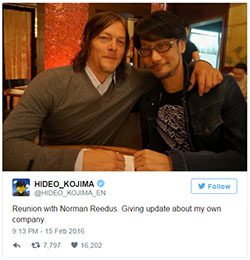
However, Silent Hill fans probably shouldn't get their hopes up for a triumphant return of their tarnished, yet beloved, franchise. In the video announcing the partnership with Sony, Kojima says that he is "thrilled to embark on creating a new franchise with PlayStation". So this project does not appear to be Silent Hills. At least, not in title...
Kojima is rumored to be collaborating once again with Guillermo Del Toro, which opens up the possibility that the two are going to work on realizing the plans that they had for Silent Hills. During a keynote address at DICE, Kojima and Del Toro stated that they would like to continue to work together. Del Toro even went as far as saying that he would "do whatever the fuck Kojima asks him to". He even made an off-hand comment about famed Japanese horror illustrator Junji Ito. I don't know much bout Junji Ito, but his work is apparently a pretty big deal, and he's also been seen with Kojima. Kojima and Norman Reedus have even been seen together, and it's been rumored that Reedus will be working with Kojima again. All the pieces seem to be fitting into place... [More]
950b88ce-adc4-4f17-85ce-fd55c7172eb0|2|5.0
Tags:Hideo Kojima, Guillermo del Toro, Andrew House, Norman Reedus, Junji Ito, Kojima Productions, Sony, PlayStation 4, PS4, virtual reality, PlayStation VR, exclusive, Konami, Fox Engine, Silent Hill, Silent Hills, P.T., Metal Gear Solid, Metal Gear Solid V: the Phantom Pain, Fungo, RagnarRox, conspiracy, rumor
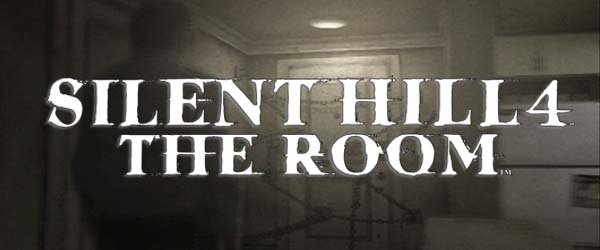
While I was playing through recent horror titles like The Evil Within, I noticed some interesting similarities with Silent Hill 4 that started to give me a new appreciation for some of this game's stronger aspects. In addition, while doing research for my Silent Hill timeline, I had to go back and play through Silent Hill 4: the Room again. I had only played through the game twice before, so I had to replay it in order to figure out how the timeline would work out. And while I was playing the game, I figured that I might as well go ahead and review it. At the time, it seemed like a novel idea to do a retro review of a Silent Hill game that wasn't Silent Hill 2, but lately, I've been seeing a lot of retro-reviews of The Room popping up other places. I haven't done any retro reviews yet; probably the closest thing has been my review of Demon's Souls. But in light of how unsuccessful the later Silent Hill games have been, the unfortunate cancellation of Silent Hills, and the uncertain future of the franchise (and of Konami as a studio), it's a good time to go back to look at what worked and what didn't about the previous games, and explore the question of whether we even want the franchise to continue.
The Room has the reputation of being the "bad" black sheep of the original Silent Hill tetralogy. I always thought that this reputation was unfortunate, and that the game wasn't quite as bad as people made it seem. I actually liked it better than Silent Hill 3 when I first played it, because I had never played the first Silent Hill. After I was able to track down a copy of the first game and play through it, Silent Hill 3 suddenly made a whole lot more sense, and I came to love it almost as much as I loved Silent Hill 2. So while I tend to agree that The Room is the "weakest" of the original Silent Hill games, I never really thought of it as being "bad"; just "less good". The release of future games by third party developers has only made The Room look better in retrospect.
An experimental formula
The game itself is a bit rough around the edges. It deviates significantly from the controls and mechanics established by the previous games in the franchise, and these changes are very hit-or-miss. This might be due, in part, to the possibility that The Room started out as an independent side project that was developed concurrently with Silent Hill 3, and that was eventually redesigned to work as a Silent Hill game in order to be more commercially viable. Whether or not that's true is still a hot issue of debate among the fanbase, but it's obvious to everybody that The Room plays a lot differently from previous titles.
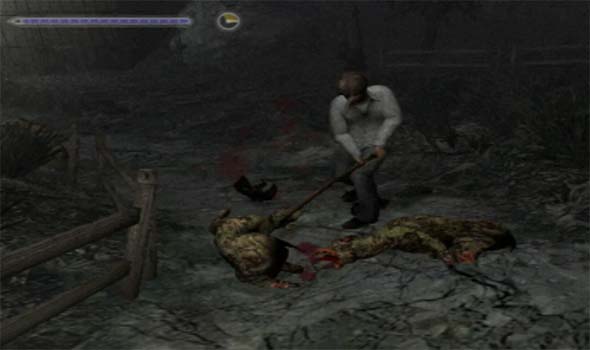
Movement and combat controls are radically changed from previous games in the series.
The most immediately obvious deviation is in movement and camera controls. The semi-first-person "tank" controls have been completely abandoned in favor of direct directional inputs, and the camera is significantly more limited than it has been in previous games. You can't snap the camera behind the character by holding the "look" button as you could do in previous games. Almost all camera angles are pre-set angles, and the player can usually only toggle between two possible camera angles in any given area.
This results in some very clumsy navigation of the environment, and it's very easy for the character to get turned around when camera angles flip. Most of the time, a camera change will go without a hitch, but there are a few frames in the game that consistently result in erratic and unpredictable movement. It happens most often when a camera change occurs concurrently with a change in direction of the character (to navigate around a corner or an obstacle). If the player's timing for changing the character's movement direction is not perfectly-timed, then the character ends up turning around, which can result in getting stuck in a loop between the two camera angles. This is the very reason that I prefer the tank controls. They may be a bit cumbersome, but at least they're consistent and always relative to a single frame of reference (the character's position in the world), rather than to an unpredictable camera.
The second major change is to combat. The game was designed to have a greater emphasis on melee combat, complete with new target-locking controls, a variety of breakable melee weapons, very limited ammunition for guns, and an on-screen meter for charging power attacks. The new movement controls do make it a bit easier to maneuver around enemies (especially multiple enemies), but only if you're in an open space and the camera angle doesn't go all wonky on you. The mechanics are serviceable, and I don't think they're as bad as some critics insist.
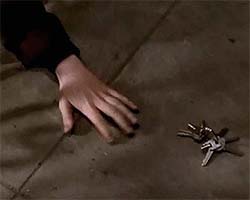
The designers were probably trying to mimic
the horror trope of fumbling for keys.
Inventory management is where things really start to get bad. Henry isn't a walking closet like the previous games' protagonists, and he has only a limited number of inventory slots. This is probably partly the result of the inventory being accessed in real-time by the directional buttons (which also might have played a role in the changes to the movement control scheme being entirely based up on the analog stick), in a desire to create a sense of frantically searching your pockets for a weapon or item while under pressure. It also adds more relevance to the Room 302 hub (another dramatic departure from previous games) by forcing you to go back to restock on supplies or swap out puzzle items.
But it's hindered by a lot of little mistakes... [More]
a5ccd49d-8af1-4839-8eb0-2796d3829980|6|4.5
Tags:Silent Hill, Silent Hill 4: the Room, Konami, Team Silent, KCET, Henry Townshend, Walter Sullivan, Eileen Galvin, room 302, horror, serial killer, murder, cult, occult, 21 Sacrements, sacrifice, ritual, ghost, escort quest, Alfred Hitchcock, retro review
|

| 12 | | | | | | | 60 | | 11 | | | | | | | 55 | | 10 | | | | | | | 50 | | 09 | | | | | | | 45 | | 08 | | | | | | | 40 | | 07 | | | | | | | 35 | | 06 | | | | | | | 30 | | 05 | | | | | | | 25 | | 04 | | | | | | | 20 | | 03 | | | | | | | 15 | | 02 | | | | | | | 10 | | 01 | | | | | | | 05 |
|